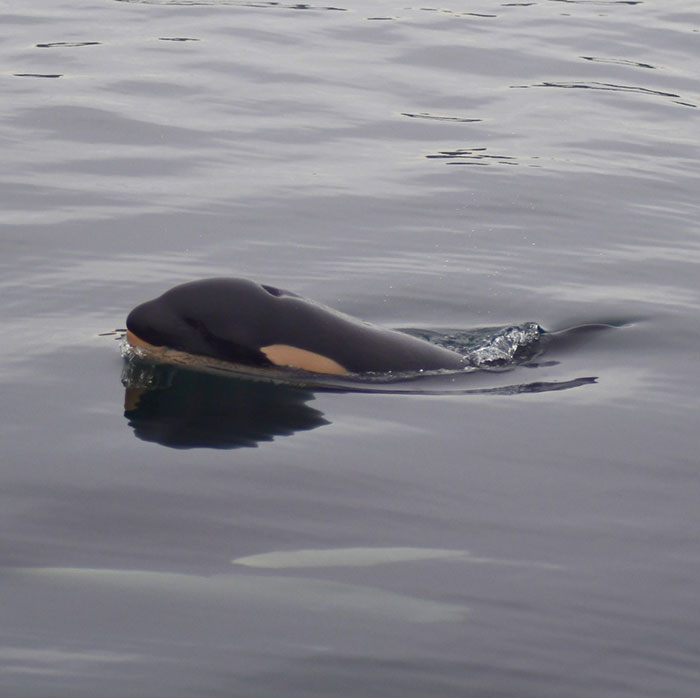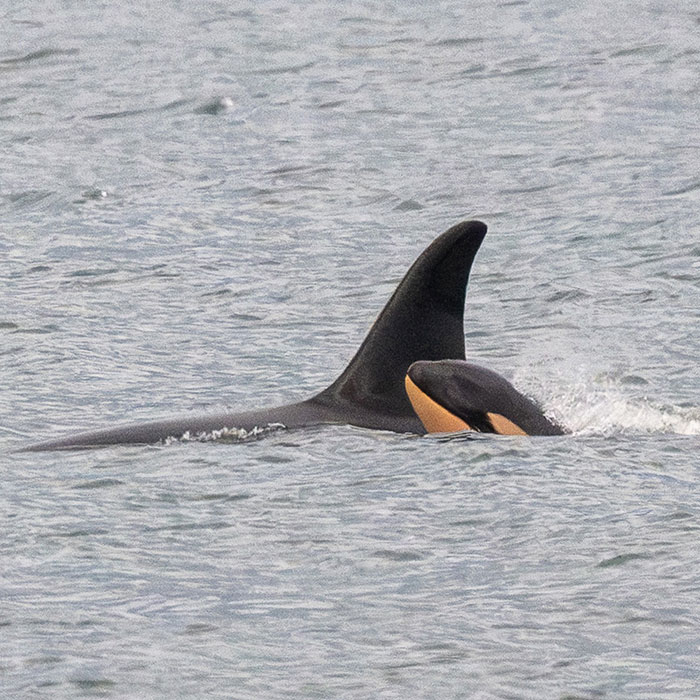
Another “Devastating” Loss For Orca Mom Who Carried Lifeless Calf For 17 Days And 1,000 Miles
Tahlequah, the Southern Resident killer whale who famously carried her deceased calf for 17 days in 2018, has tragically lost her newest offspring. The heartbreaking death of the calf reportedly highlights the precarious survival rates of the species and underscores ongoing concerns about the whales’ primary food supply.
Tahlequah, a female orca born around 1998, endured the devastating loss of her newborn, J61, a female calf born in December 2024.
- Orca Tahlequah lost another newborn after a 2018 ordeal of carrying a dead calf for 17 days.
- The loss of her calf, J61, highlighted precarious survival rates for Southern Resident killer whales.
- Critical need for salmon recovery was emphasized for the survival of these endangered orcas.
Researchers from the Center for Whale Research confirmed the death on January 1, 2025, and observed J35 carrying the calf’s body, echoing her previous mourning behavior.
“The death of any calf in the SRKW [southern resident killer whales] population is a tremendous loss, but the death of J61 is particularly devastating, not just because she was a female, who could have one day potentially led her own matriline but also given the history of her mother J35 who has now lost two out of four documented calves – both of which were female,” the Center for Whale Research announced on Wednesday (January 1) on social media.
Tahlequah is a Southern Resident killer whale who famously carried her deceased calf for 17 days in 2018
Image credits: Center for Whale Research
It further stated: “The Center for Whale Research has received additional information that as of 1/1/25, J35 has been seen carrying the body of the deceased calf (J61) with her.
“This behavior was seen previously by J35 in 2018 when she carried the body of her deceased calf for 17 days.
“We hope to have more information on the situation through further observation and will provide more details at that time.”
Image credits: Center for Whale Research
The research center first reported a new calf seen with J pod – one of the three family groups, or pods, that make up the SRKW population, an endangered group of orcas living primarily in the Pacific Northwest – on December 20.
Scientists subsequently emphasized the critical need for salmon recovery to ensure the survival of the whales and their calves, as they wrote on Instagram: “The Southern Resident killer whale population needs ample access to their food supply, mainly salmon, to survive and thrive.
“Every single birth counts and these whales need enough fish to be able to support themselves and their calves.
She has now tragically lost her newest offspring
Image credits: Center for Whale Research
“We continue to advocate for salmon recovery through habitat restoration, removal of dams, and rational management of fisheries in the Pacific Northwest.”
Upon confirming that the calf that had been discovered was J35, Tahlequah’s official alphanumeric designation, on December 24, the researchers shared their worry.
“The team, including multiple experienced killer whale researchers, have expressed concern about the calf’s health based on the behavior of both J35 and J61,” the center wrote on Instagram.
Image credits: Center for Whale Research
It continued: “Early life is always dangerous for new calves, with a very high mortality rate in the first year.
“J35 is an experienced mother, and we hope that she is able to keep J61 alive through these difficult early days.”
Tahlequah made headlines in 2018 when she was observed grieving her deceased calf by swimming with it on her back for 17 days, People reported on December 27.
The heartbreaking death of the calf reportedly highlights the precarious survival rates of the species
Image credits: Ken Balcomb/Center for Whale Research
Image credits: KING 5 Seattle
By the time she finally let the calf go, the killer whale had swum a distance of 1,000 miles (approximately 1609 kilometers) with her late newborn.
Despite her tragic loss, the research center was relieved when it observed at the time that Tahlequah’s physical condition was healthy.
“Her tour of grief is now over and her behavior is remarkably frisky,” the center announced in 2018.
It further shared: “Telephoto digital images taken from shore show that this mother whale appears to be in good physical condition (no evidence of “peanut-head”) following her record-setting ordeal.
“There had been reports from brief sightings by whale-watchers two days ago that J35 (Tahlequah) was not pushing the calf carcass in Georgia Strait near Vancouver, BC, and now we can confirm that she definitely has abandoned it.
“The carcass has probably sunk to the bottom of these inland marine waters of the Salish Sea, and researchers may not get a chance to examine it for necropsy.”
Approximately 75% of newborns in the recent two decades following the designation of the Southern Resident killer whale (orca) population as “Endangered” have not survived, and 100% of the pregnancies in the past three years have failed to produce viable offspring, the center regrettably explained in 2018.
“Cannot imagine the amount of grief she must be feeling,” a reader commented
Poll Question
How did the recent loss of J61 impact your perception of the Southern Resident killer whales' survival challenges?
Increased awareness
Unchanged
Decreased awareness
Not sure
It makes me wonder if there's not a genetic component going on. The calves she's successfully raised have all been male, J47 "Notch", then her second calf, a female passed away soon after birth. Then her third calf, J57 "Phoenix", who's currently swimming with the pod (though he is 3), and then finally this female calf.
Well, humans demand to have unlimited access to cheap supermarket salmon. Every salmon dumped in the trash contributed to the death of that calf. Think twice before animals are killed for food, and never, ever waste food. Just to have the pleasant sight of every supermarkets shelves packed 24/7, so you as consumer don't need to think ahead, does not justify killing more animals than absolutely necessary.
It makes me wonder if there's not a genetic component going on. The calves she's successfully raised have all been male, J47 "Notch", then her second calf, a female passed away soon after birth. Then her third calf, J57 "Phoenix", who's currently swimming with the pod (though he is 3), and then finally this female calf.
Well, humans demand to have unlimited access to cheap supermarket salmon. Every salmon dumped in the trash contributed to the death of that calf. Think twice before animals are killed for food, and never, ever waste food. Just to have the pleasant sight of every supermarkets shelves packed 24/7, so you as consumer don't need to think ahead, does not justify killing more animals than absolutely necessary.

 Dark Mode
Dark Mode 

 No fees, cancel anytime
No fees, cancel anytime 





































































43
6